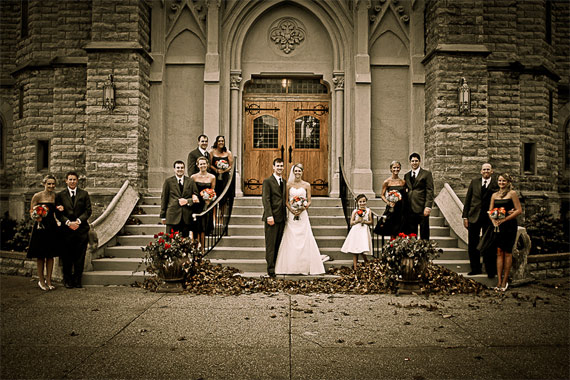
Photo captured by Natalie Milissenta Shmeleva (Click Image to See More From Natalie Milissenta Shmeleva)
As a Yorkshire wedding photographer, I often write articles about camera technique and photographic style. Today I’m writing for the wider photographic community about photographers’ backup strategies so if ‘tech-geekery’ is not your thing then other articles I have written may be of more interest. The topic of this article is really important and one that I have been meaning to talk about for some time and is definitely helping me sleep more easily.
Clients often ask me about my backup strategy, especially wedding clients, and without going into too much detail I explain that backup and the redundancy plan of those backups will mean that I will always have a minimum of 3 copies of a wedding or commercial job to rely on in the event of a disaster. Disasters do happen and those disasters come in all manner of forms from natural phenomenon such as fire, electrical failure and flooding through to simple human error such as driving over a laptop – yes this has happened to me!
Having worked as a photographer for over 10 years now, I have been very secure with my backup strategy, it was much different back in the days of film when there would only ever be one set of negatives so they ALWAYS lived in a fire proof safe but digital images allow me to easily make copies – so I do and in copious amounts!
What follows is an explanation of my backup strategy that I use day in day out and it helps me sleep very easily at night.
In the field I use (A) Sandisk Ultra II 4 gb compact flash cards in my Nikon D700 cameras. I never use cards bigger than this because if a card fails, is lost or stolen at least I have a job spread over a number of cards and all would not be lost. At a typical wedding I shoot at least 24-30 gigs (that’s around 2500 images) so if I shot 16gb cards, the stakes would be a lot higher! Once I have filled a card up, I then copy it in the field to 2 devices at the same time (B) A Jobo Giga One digital Wallet and a (C) MacBook Pro. The digital wallet originally shipped with a 40gb hard drive but I have modded it with a larger 160gb drive to get more stuff on it. Once the wedding or the job is finished and I have backed up the whole collection, I will drive home with the Macbook and my assistant will drive home with the digital wallet so that we have at least 2 sets in different locations at all times.
Once I get home, I then connect the Macbook to a (D) 4 TB external hard drive and make another copy which stays at my house and that drive never leaves home. So at this point I have 4 copies of every job I do – you may think it’s overkill, but storage space is cheap and I like to sleep soundly at night! The next stage of the strategy takes place at my office where I hook up the Macbook via a Gigabit ethernet Switch to my (E) iMac which then takes all of the images and copies onto a (F) Verbatim 2TB Raid hard drive system Raid drives are awesome! in layman’s terms, a RAID is basically 2 separate hard drives that are configured to mirror each other (they can be set in other configurations, but the most secure method is mirroring) so once I copy onto the RAID I am effectively getting 2 separate copies.
Should one of the drives in the array go down, I receive an email notification and all I have to do is replace the faulty drive and the system then builds another backup from the healthy disk. So this is my ‘live drive’ now propagated with the job I have just shot and I now have 6 copies, 2 of which are off site.
The last step in my strategy is to backup my live drive and my archive drive on a regular basis via a (G) Hard Drive dock. This device allows me to hot swap hard drives without a caddy and so at least once or twice a week I bring drives that I keep offsite to the office and make backups of my ‘live drive’ and my ‘archive’ drive. Should I ever have a data disaster, I’m now confident that my work is safe and I would be able to work off offsite drives. Just to seal the deal I also have Time Machine set up on my MacBook Pro and iMac so I think I’ve got all the bases covered with the copies.
Some people may ask where do writable DVDs come into the workflow? Well to be honest, I stopped using them at the start of last year’s wedding season after reading a lot about how the format degrades over time so I made the decision to stop making DVD copies. I’m actually really happy about that because writing disks was a really lengthy operation after a 12 hour wedding shoot!
This discussion has been about my digital assets and how I look after them, but I do want to talk briefly about my website and how I deal with it’s security/backup as I did have a website ‘infraction’ before Christmas which led to a loss of service for a few days. My website is built on the WordPress platform and although WordPress is one of the world’s most popular CMS systems, it needs a lot of ‘tweaking’ to make it secure and robust. My web consultant has installed several security plugins which protect against various types of web-borne threats bit I also make sure I have my own copy of my website available should anything happen. Of course my web host takes daily backups but they can be difficult to deploy should they be needed on a weekend or evening, therefore I have a plugin installed which makes regular backups of my WordPress installation and files to a cloud based solution called Sugarsync. I can now re-deploy my website from a clean copy should it get attacked and my down time will be minimised.
I hope this article will help you understand what professional wedding photographers do to protect their digital assets and inspire you to take a similar approach to protecting your important images.
About the Author:
Andrew Crozier is a full-time professional Wedding photographer based in the North East of England (http://www.insightphotographers.co.uk) but covering nuptials throughout the British Isles.
Like This Article?
Don't Miss The Next One!
Join over 100,000 photographers of all experience levels who receive our free photography tips and articles to stay current:








I love the redundancy, but I am not sure that its necessary in such amounts. As someone mentioned above Crash Plan could easily take care of offsite backups.
I love the in field backup, I never thought to use something like that.
Once at home a RAID array should be sufficient, then you could always mirror the array to one at the office. They’d both be mirrored at all times, plus the data would be copied to Crash Plan or something online.
Just some thoughts, but redundancy is always a good thing.
RAID 5 is just as secure as RAID 1…but it gives you the benefit of only losing one drive per array rather than needing 2 drives per expansion. IOW if you have 4 1 TB drives if you use RAID 1 you end up with 2 TB of data because each drive must be mirrored to another drive. However if you use RAID 5 you end up with 3 TB of space because only 1 drive is lost in the data replication. In both cases any 1 drive can fail, but your data remains because it is replicated throughout all 4 drives. Add another drive and you now have 4 TB of data spread across 5 drives. So unless you are only going to use 2 drives RAID 5 is far more cost friendly in the long run.
Also in the states I’d recommend using an offsite backup host like Crashplan. Crashplan currently offers an unlimited backup for home users for $6 a month. At that price you can save yourself a lot of headaches and money by just automating a backup off of your RAID device. Plus you offload the offsite and multiple copies of the file to crashplan itself. If you are using this for your business they have a business offering that I’d recommend. Either way the methods incorporated here is mostly wasted effort. Yes you need the local RAID for quick and easy access to your files and for archiving, but the rest of the processes is wasted time and error prone. A simple client or script, such as crashplan or mozy or any other backups system, would automate the whole processes and actually make it even more resilient to major mishaps and technological difficulties.
òtimo!
Very much appreciate the guidance about multiple copies and especially the point of multiple physical locations/sites. That’s why I use an on-line service for my off-site back up – there are several, Mozy & Carbonite are bigger names and I’ve used both and work for neither. I keep my photos on a computer at home and a copy is _automatically_ sent to the service and they provide both redundancy and encryption so I don’t have to worry about a RAID configuration or replacing drives that die. It’s better than an insurance policy and I don’t have to “do” anything to get the second copy and second location.